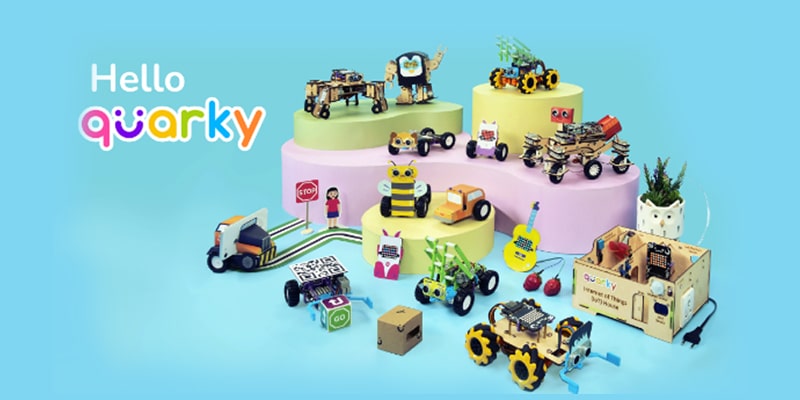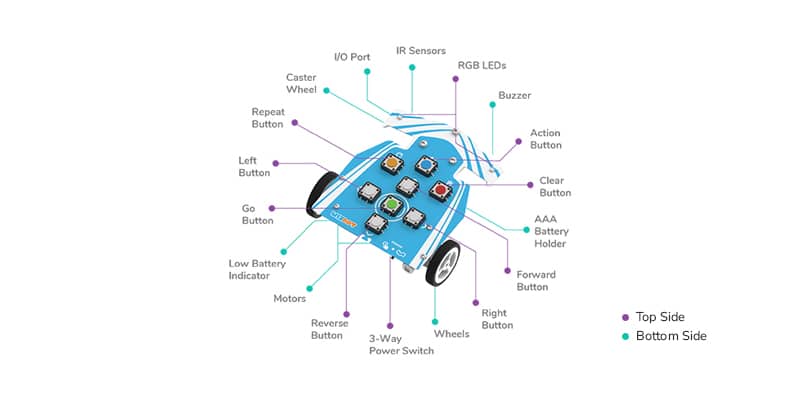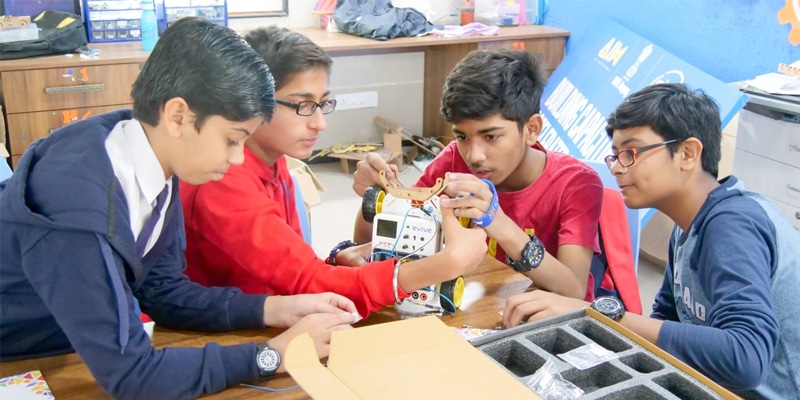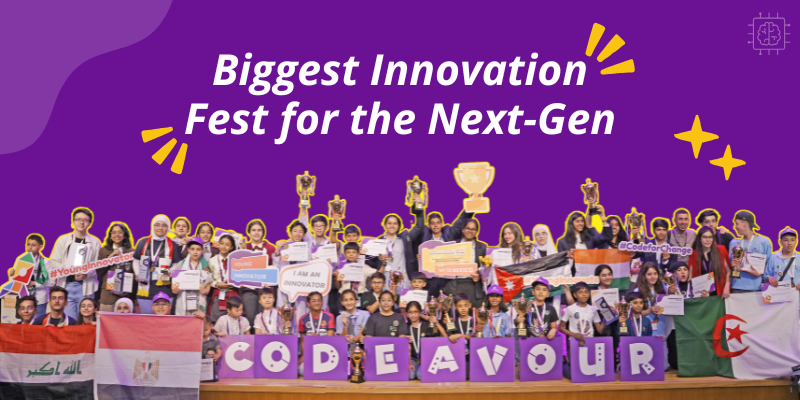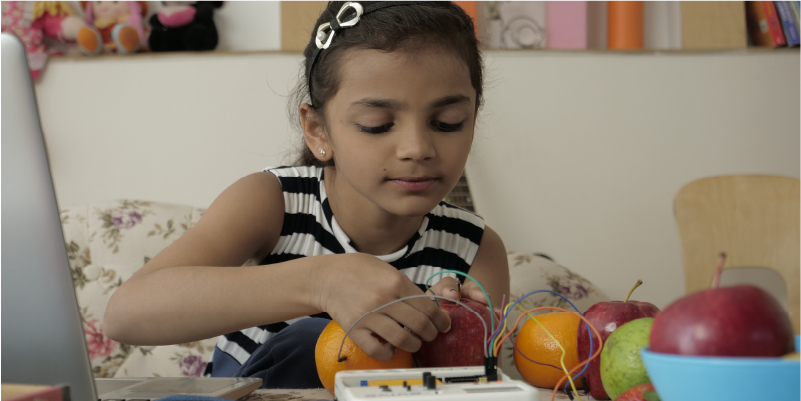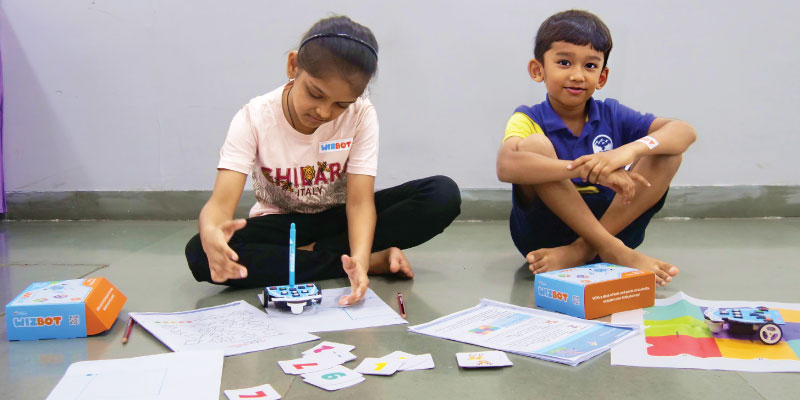Did you know that educational robots can transform how children learn, think, and interact with technology?
In an era where modern education continually evolves, including educational robots in early curricula is becoming important. Esteemed boards like CBSE and ICSE have begun to emphasize the importance of robotics education from an early age.
Under the skill hub initiative, the boards recognize the potential of hardware integration to revolutionize traditional teaching methodologies. Integrating educational robotics kits into children’s learning experiences not only fosters creativity and critical thinking but also prepares them for future technological advancements.
In this journey, STEMpedia stands at the forefront of this educational revolution, offering state-of-the-art robots like Quarky, Evive, and Wizbot, designed specifically for young learners. Continue reading to understand the importance, advantages, and how STEMpedia plays a vital role in weaving educational robots into the fabric of early childhood learning journeys.
Importance of Educational Robots in Early Childhood Education
Introducing educational robots marks a key shift in teaching methodologies, redefining the essence of interactive learning. Here are seven reasons why it is important to incorporate robots into children’s learning journey.
- Develops Learn by Doing Attitude: Robots provide a tangible way for students to engage with complex concepts, bridging the gap between theoretical knowledge and practical application.
- Enhances Computational Thinking: Students develop critical thinking and problem-solving skills through programming and operating robots, which are essential for success in any field.
- Fostering Innovation-Centric Mindset: Robotics naturally integrate Science, Technology, Engineering, and Mathematics (STEM) subjects, making these fields more accessible and engaging for students.
- Teamwork and Leadership Qualities: Robotics projects often require teamwork, encouraging students to collaborate, share ideas, and improve their communication skills. One such platform is Codeavour, the world’s biggest AI, coding, and robotics competition for students. The impact program encourages young innovators to bring ideas into reality. Here, students turn into creators and problem solvers.Want to be a part of Codeavour 5.0 International? Register Now!

- Adapts to Various Learning Styles: Educational robots cater to different learning styles. The robotics kits offer visual, auditory, and hands-on learners a unique opportunity to engage with the material in a way that suits them best.
- Prepares for the Future: As technology advances, understanding robotics will become increasingly important for the future job market. Early exposure prepares students for the technological landscape of Industry 4.0.
- Boosts Engagement and Motivation: Robots’ interactive and fun nature increases student engagement and motivation, making learning more enjoyable and effective.
Real-World Application of Using Educational Robots
Educational robots are not just tools for teaching; they are gateways to a future where technology and humans creatively interact. Here are a few advantages of integrating these innovative tools into the educational landscape.
- Software Engineering: Robotics introduces students to coding and programming, which are foundational skills for software engineers. This early exposure simplifies complex concepts, making the transition to software development smoother and more intuitive.
- Mechanical Engineering: By designing and building robots, students gain hands-on experience in mechanical design and structural engineering, essential skills for creating the machinery and infrastructure of tomorrow.
- Healthcare and Medicine: Robotics education can inspire the development of robotic surgeries and patient care technologies. It equips students with the knowledge to innovate in medical robotics, improving precision and patient outcomes.
- Environmental Science: Students can learn about environmental monitoring and conservation techniques through robotics. Robotics technology enables the development of solutions for pollution control, wildlife preservation, and sustainable agriculture.
- Space Exploration: Robotics play a crucial role in space exploration. Educating students in robotics paves the way for innovations in spacecraft design, planetary exploration, and even extraterrestrial habitat construction.
How STEMpedia Can Help Integrate Educational Robotics Kits in the Curriculum
STEMpedia is determined to revolutionize how educational robotics kits are integrated into curriculums, making cutting-edge technology accessible to students and educators. Here’s how:
Quarky: DIY Al and Robotics Kit with plug-and-play interface
A versatile and interactive tool that introduces students to coding, AI, and physical computing. Quarky stands out with its intuitive plug-and-play interface, allowing easy connection of electronic components like sensors, motors, and servos without soldering. It’s an excellent tool for understanding widely used artificial intelligence concepts such as self-driving cars, face recognition, and speech recognition.
Link – Quarky YT Video
Evive: STEM DIY Prototyping Tool with Practical Learning
Evive is a one-stop; comprehensive STEM DIY prototyping tool that immerses students in electronics, robotics, IoT, and programming. It’s praised for transforming theoretical knowledge into practical skills through project-based learning. Evive has been instrumental in classrooms, facilitating a deep understanding of STEM concepts through interactive and engaging projects.
Link – Evive YT Video
Wizbot: Affordable FLN and Computational Thinking Education Platform
With its unique screenless button-based programming interface, Wizbot is tailored for foundational learning in numeracy and computational thinking. It makes technology, robotics, and coding accessible to early learners, especially in developing nations and underrepresented communities. Wizbot’s approach to education is distinguished by its simplicity and effectiveness in teaching basic mathematics and logical reasoning through fun and interactive means.
STEMpedia’s commitment to advancing educational robotics is evident in the design and functionality of Quarky, Evive, and Wizbot. Each tool is engineered with the educator and learner in mind, ensuring that integrating these kits into curriculums enhances STEM education and prepares students for the future.
In A Nutshell
The education system is at a vital juncture where we face a future driven by technology. Understanding the need, CBSE and ICSE boards introduced the skill hub initiative. They recognize the urgency of integrating educational robotics kits into curricula to ensure education for all from an early age.
In alignment with the initiative, STEMpedia’s educational robots, Quarky, Evive, and Wizbot, embody this shift, promising to democratize ‘education for all’ through hands-on learning.
These educational robots not only make STEM accessible but also prepare students for real-world challenges in software engineering, healthcare, and space exploration. By fostering critical thinking and problem-solving skills, they ensure students are ready for the technological advancements of tomorrow.
Educators, institutional heads, and decision-makers are invited to explore STEMpedia’s innovative solutions. For a free demo or to learn more, contact us at contact@thestempedia.com, and join the educational revolution today.




